Boy do we love a purple pepper. There are now countless purple and black varieties to choose from. However, one of the most striking is the buena mulata pepper.
This cayenne-type pepper was saved through generations, leading back to Horace Pippin, an artist living in Pennsylvania in the early 1920s. He collected rare seeds, and is known to have traded the fish pepper, buena mulata, and golden honey varieties.
In this article, we’ll discuss the buena mulata pepper in detail, including its appearance, heat level, flavor, and growth habits. Let’s get started!
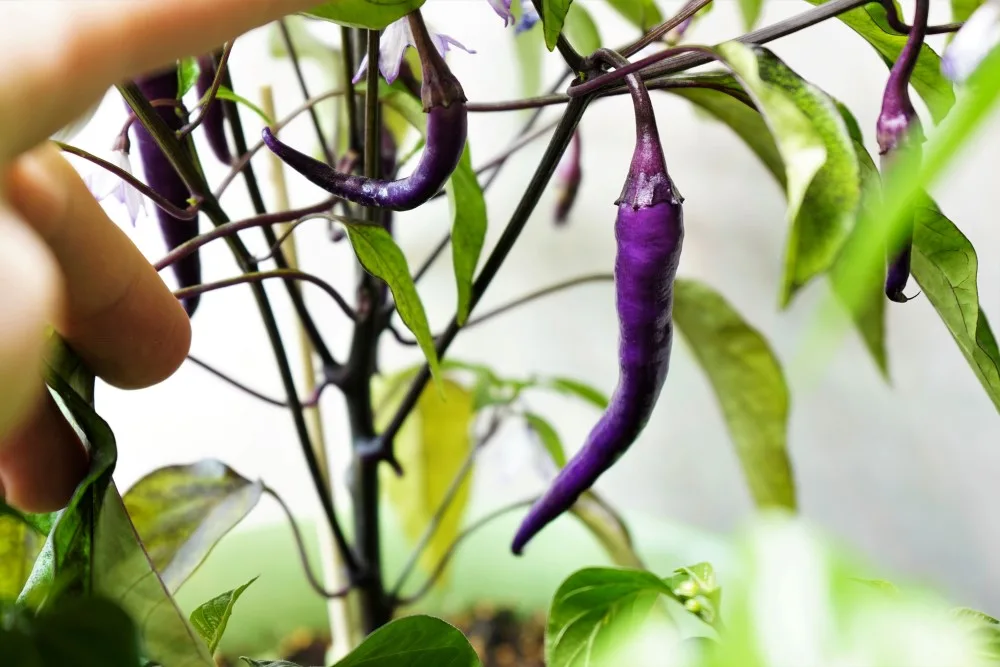
Appearance and Plant
Without a doubt, the most appealing trait of the buena mulata pepper is its appearance. The pods start off a pale green, almost yellow color, but quickly turn bright purple as they grow. Once they begin to ripen, the peppers turn orange, then brown, and finally to a deep crimson red.
The flowers are also beautiful, with shades of light purple and white. As a C. annuum varietiy, the flowers produce lots of pollen, making self-fertilization easy, even with indoor plants.
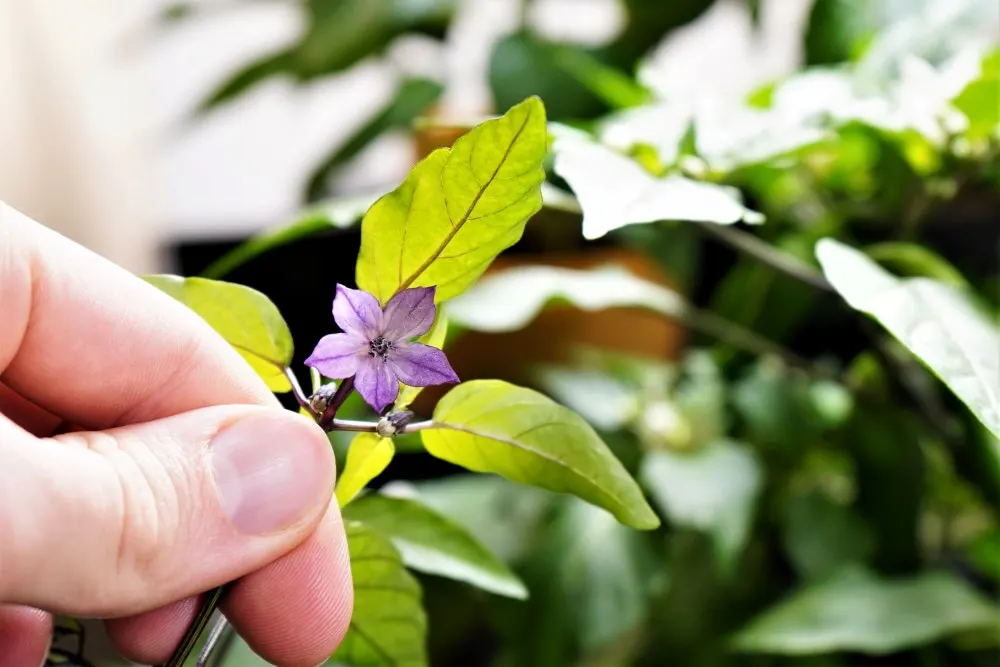
The peppers grow to be long and slender, around 4 inches in length, and about 1/3 inch wide. The plants produce a relatively sparse canopy, with small, thin leaves.
Our buena mulata required support from a young age, and especially once the plant was heavy with fruits. Compared to other cayenne types, the buena mulata certainly seems a bit more delicate, and not very vigorous.
Heat Level (Scoville)
Just like most cayenne types, the buena mulata is a pretty spicy pepper variety. It isn’t among the hottest in the world, but it does pack a good punch of heat.
The buena mulata pepper ranges in heat from 30,000-50,000 SHUs on the Scoville scale. This is typical for run of the mill cayenne varieties, but the buena mulata has more ornamental charm.
While its heat level is average for a cayenne, yield is lower than other types. With this in mind, the buena mulata may not be the best choice if you are growing cayennes for large batches of sauce or powder.
Flavor
Like most chiles, the buena mulata changes flavors as it ripens. So, if you pick the peppers while they are still purple (unripe), they will have a bit more of a vegetative, almost grassy flavor.
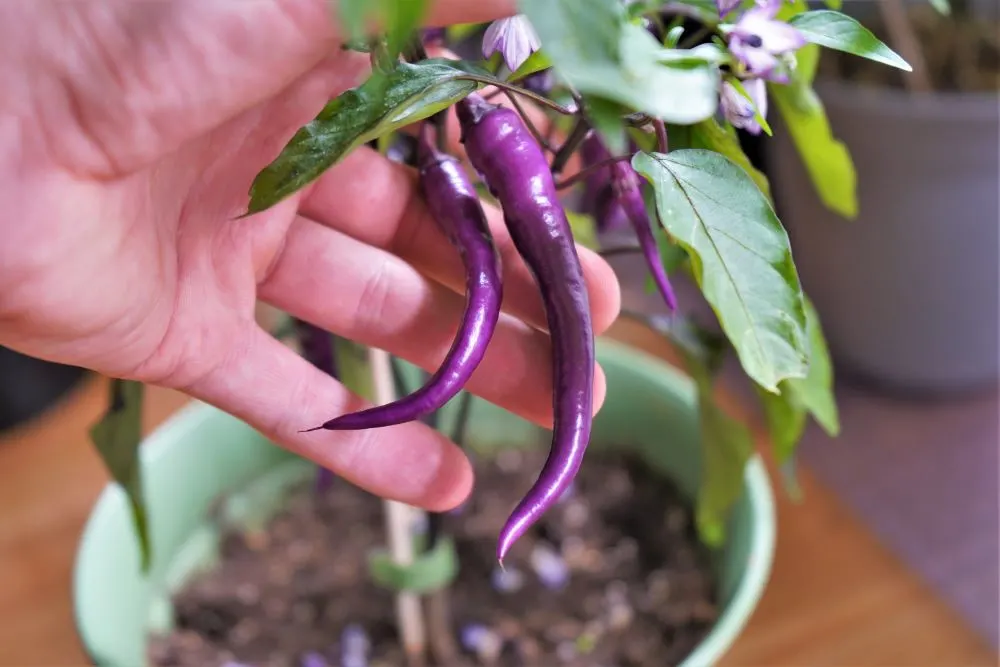
After the pods have changed to their final red color (ripe), the flavor is more sweet and smoky. I would recommend waiting for fully ripe pods before picking for the best flavor. However, they are edible at all stages, and maybe the purple color is more important than flavor.
Buena Mulata Seeds and Growing
If you want your own fresh buena mulata peppers, you’ll have to grow them yourself. There are many seed sources, but the best place to buy them is on rare seeds.
As for growing, you can treat the buena mulata like any other annuum species pepper. Learn how to grow peppers from seed in our detailed article here.
I hope this article inspires you to explore the vast selection of interesting pepper varieties. The buena mulata is certainly an eye-catching variety to add to the garden, with plenty of practical uses too!
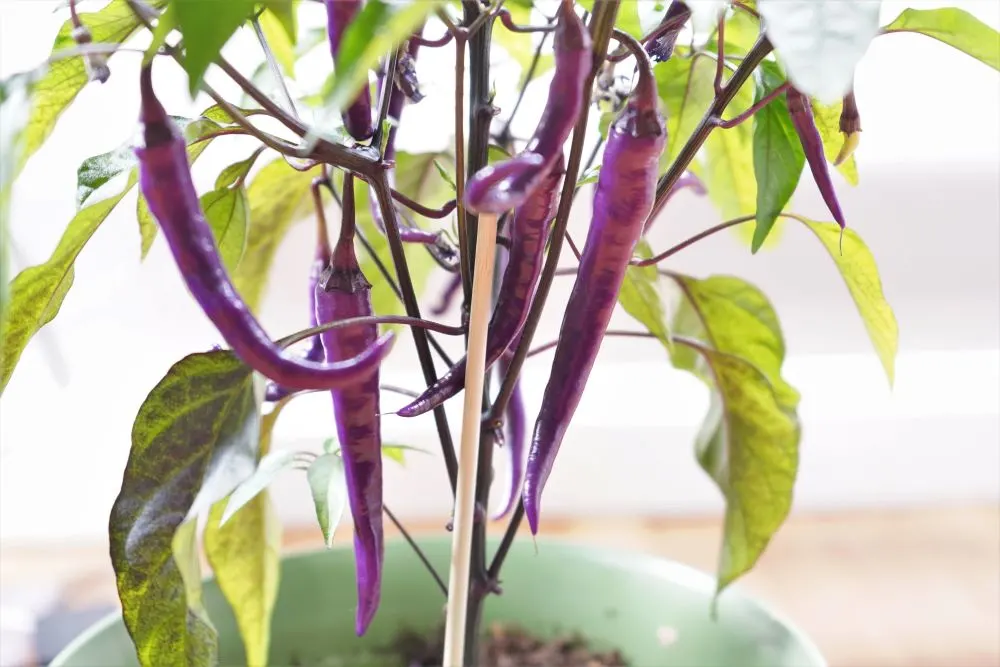

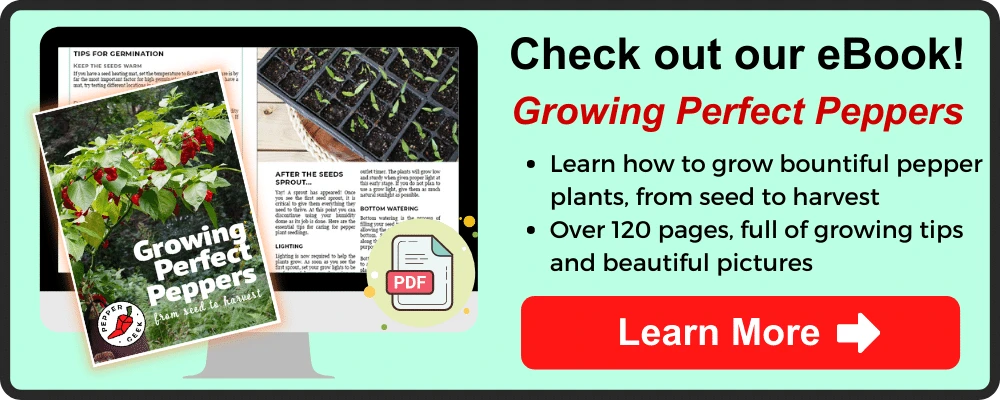


Simone
Friday 22nd of September 2023
I grew these hydroponically in the Northwest Territories of Canada during the worst fire season on record. Turns out, they are in to that kind of thing. I have so many peppers from these plants! This is my first season growing in the territories so we'll see if I get as much of a bumper crop next year.
Kandy
Thursday 7th of September 2023
If you pickle them do they retain their color?
peppergeek
Saturday 9th of September 2023
Haven't tried pickling these, but I imagine they would retain the purple color if pickled while still unripe.
Matt
Monday 31st of July 2023
I’m growing some right now hydroponically. No peppers or flowers yet, but the leaf veins and stems are a nice purple color. I planted three varieties of peppers at a time and these took off really quickly. The other two varieties have some catching up to do!
Jack
Tuesday 25th of July 2023
Great article on Buena Mulata Peppers. Grew them from seeds for the first time in containers. One container has over 30 peppers with the help of your advise. Thanks.
Mike Edwards
Wednesday 15th of February 2023
I grew these last year, but like many of my plants that year, I didn't get many fully ripe peppers before it got cold (I'm in Zone 5). The purple color is very striking and I made a fresh sauce with them to see what the color would be but it ended up more mauve and wasn't very flavorful. I likely wouldn't grow them again but it was neat to watch them develop.
Janet
Thursday 24th of August 2023
@Mike Edwards, I know this is a little old, but I found the flavor much improved once the peppers turned bright red.
JonTopps
Wednesday 15th of February 2023
@Mike Edwards, I've learned that, apparently, stressing the plant out when cold season is coming can help the plant hurry up and ripen its pods. I had quite a few unripe last year as well (I'm in Canada...) so I'm looking forward to trying this out. You jap at the roots, rip off leaves, stuff like that, lol. It puts it into survival mode and it wants to make the seeds viable, which ripens the fruit.